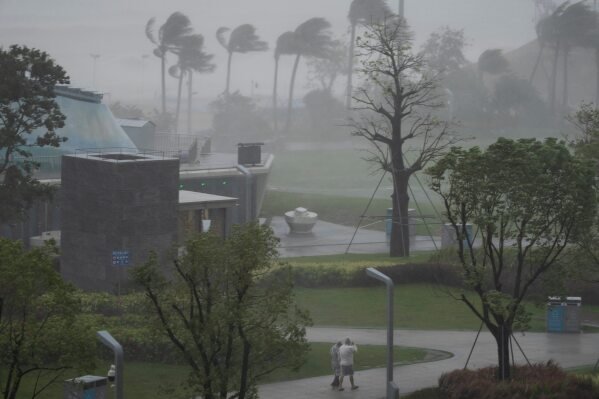At least 14 people have died in eastern Taiwan’s Hualien county after a barrier lake overflowed, sending a wall of water into a township, as Typhoon Ragasa hit the region.

The disaster began on Tuesday afternoon when the lake, created by landslides after days of heavy rain, burst its banks and flooded Guangfu township.
Government figures show that about 60 per cent of the town’s 8,500 residents stayed in the upper floors of their homes in a “vertical evacuation.” Most of the others left the area to stay with relatives.
The lake contained nearly 91 million tonnes of water, equal to 36,000 Olympic-sized pools, and about 60 million tonnes surged out when it overflowed, Reuters reported, citing officials.
People missing
Taiwan’s fire department reported on Wednesday that 124 people are still unaccounted for in Hualien county, the hard-hit region in the island’s east.
Taiwan has been battered since Monday by the outer bands of Super Typhoon Ragasa, which is now moving toward southern China and Hong Kong. Hualien alone has recorded about 70 cm (28 inches) of rainfall.

In 2009, Typhoon Morakot killed nearly 700 people in southern Taiwan and caused an estimated $3 billion in damage.
Southern Chinese cities had scaled back many aspects of daily life, with schools and businesses closed and flights cancelled, as they braced for one of the strongest typhoons in years.
People brace for typhoon
In preparation for Super Typhoon Ragasa, residents in flood-prone areas placed sandbags and barriers at their doors, while others taped windows and glass panels to withstand strong winds. Many stocked up on food and essentials, and some market vendors reported a surge in sales as supplies ran low.
On a Hong Kong promenade, locals gathered to observe waves reaching 2 to 3 meters (6.5 to 9.8 feet) before the storm intensified. Authorities rescued three people, including a child, from the sea, and police monitored the rising waters closely.

Hong Kong’s observatory reported that Ragasa, with maximum sustained winds near 195 kph (120 mph), is moving west-northwest at roughly 22 kph (13.7 mph) across the northern South China Sea, edging closer to Guangdong province. Over 1 million residents in the province have been relocated, according to Guangdong’s Department of Emergency Management.
Landfall forecast
China’s National Meteorological Center warned that the typhoon is expected to make landfall between Taishan and Zhanjiang cities in Guangdong between midday and evening on Wednesday. Widespread heavy rainfall is predicted across much of Guangdong and neighboring Fujian province.

The government warned that water levels could reach heights similar to those during Typhoon Hato in 2017 and Typhoon Mangkhut in 2018, which caused direct economic losses of over HK$1 billion ($154 million) and HK$4.6 billion, respectively.







